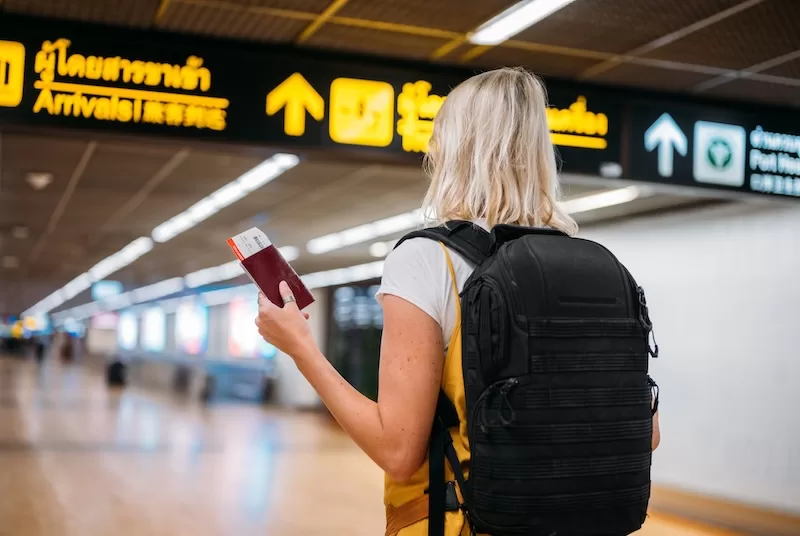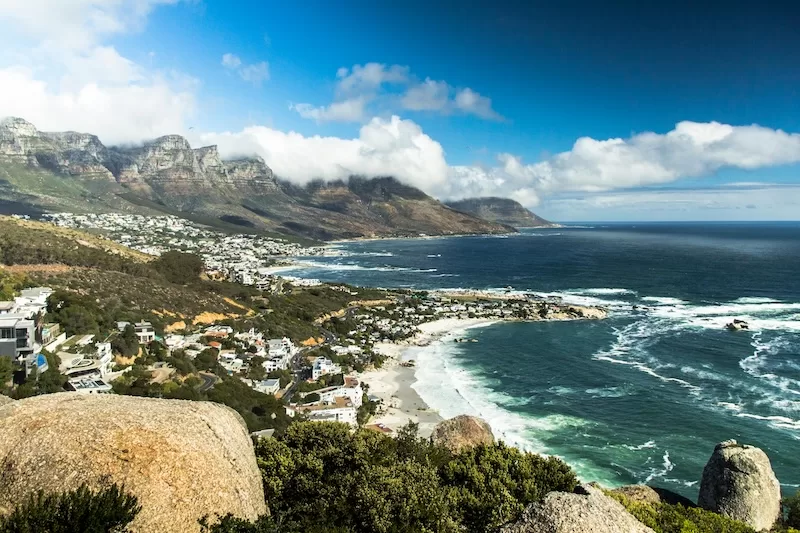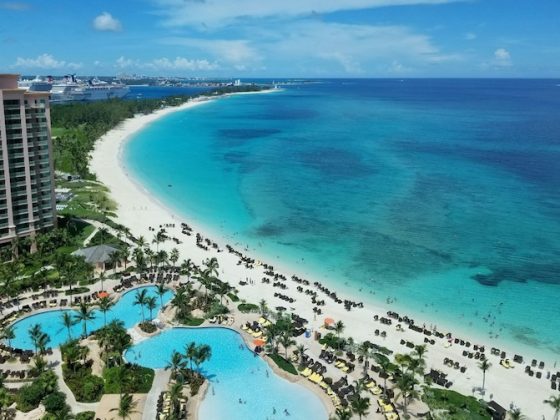The tourist visa is the original passport privilege—entry granted not for wealth, labor, or lineage, but for presence. It is simple, accessible, and widely issued. And in an increasingly restrictive residency landscape, it is still one of the easiest ways to put your feet on foreign soil.
But that simplicity is deceptive. Because unlike the investor visa or digital nomad permit, the tourist visa carries a fixed expiry date—and a far lower margin for error. What begins as a 90-day escape can quickly spiral into a logistical dance of entry stamps, exit tickets, and legal grey zones.
For globally mobile individuals navigating geopolitical shifts and uncertain timelines, the tourist visa has reemerged as a temporary Plan B. Not as a permanent relocation tool, but as a soft entry—a way to explore options, weigh opportunities, or simply wait out instability elsewhere. The question is not whether you can live on a tourist visa. It’s how long you can do so without consequences.
Understanding the Clock
In most of the developed world, tourist stays are short, clear-cut, and closely monitored. The Schengen Zone—the EU’s 29-country free-movement area—permits 90 days of stay within any 180-day rolling period. That’s three months inside, followed by three months out, regardless of whether you hop borders or cities.
The United Kingdom allows six months for most nationalities, but with increased scrutiny on repeat entries. Australia and New Zealand are similarly generous but require online applications in advance. Southeast Asian countries vary widely—Thailand typically grants 30 days on arrival, extendable to 60, while Indonesia offers a 60-day e-visa that’s renewable, but rarely indefinite.
Latin America tends to be more relaxed. Mexico offers a tourist visa of up to 180 days, no questions asked. Colombia and Brazil each allow up to 90 days, renewable in-country. Some nations, like Uruguay, offer extended tourist stays with near-residency privileges. But time is never infinite—eventually, the clock resets and immigration wants a reason to let you back in.

Visa Loopholes Unpacked
In border towns from Chiang Mai to Tijuana, entire micro-economies have emerged to support what’s known as the “visa run”. A quick exit and reentry designed to reset the tourist stay clock. Some countries tolerated the practice for years, turning a blind eye to perpetual border hoppers. Others have cracked down.
Thailand, once a haven for repeat-entry travelers, began denying entry to serial visa runners in 2014. Bali has followed suit, issuing fines and blacklists for overstays. The Schengen Zone has tightened biometric tracking, making it harder to game the 90/180 rule with simple airport exits.
Still, workarounds persist. Many travelers alternate countries—90 days in Spain, followed by 90 in
Croatia (which only recently joined Schengen), then on to Turkey or Georgia. Others strategically time their stays, leveraging free-entry policies or extended tourist visas in Latin America or Southeast Asia.
The line between legal and illegal becomes blurred. Overstaying by even a few days can incur fines, entry bans, or worse—a flagged passport that raises questions at future borders. The freedom is real, but the consequences are too.
Read more like this: Top 10 Things to Know if You’re Moving to Bali
What Happens If You Overstay?
It starts small—a warning, a fine, perhaps a lecture from a uniformed agent. But repeated or prolonged overstays can lead to far more serious repercussions.
In Thailand, an overstay of more than 90 days can result in a one-year ban. Germany can bar violators from all Schengen countries for up to five years. The United States takes it a step further—an overstay of more than 180 days can trigger a three-year reentry ban, while over a year gets you ten.
Beyond legal penalties, there are subtler consequences. Your passport may be marked. Airline staff may flag you at check-in. Border officials may start asking harder questions. And applying for any future visa becomes a gamble—because overstaying, even once, labels you as high-risk in the eyes of immigration authorities.

Rooted Without Rights
For those building lives abroad—remote workers, retirees, slow travelers—the tourist visa often begins as a placeholder. A way to test the waters before committing to a residency application. But in some cases, the temporary becomes semi-permanent.
That’s when the lines blur. If you rent a home, sign a long-term lease, or open a local bank account, you’re no longer just visiting—you’re residing. And that distinction matters.
In the eyes of immigration, a tourist is transient. No ties. No intent to stay. But the more rooted your presence becomes, the greater the risk that you’ll be viewed as misusing your visa. Immigration officers increasingly ask for return tickets, proof of accommodation, and evidence that you’re not working locally. Arriving too frequently or staying too long raises red flags—even if every stay is technically within the legal limit.
For many clients, the tourist visa is the quiet start of their relocation story,” said Thomas Ng, a Southeast Asia–based immigration advisor at Pacific Entry Solutions. “It gives people a way to test the waters before committing to residency—but it’s not a long-term strategy in itself.
Smart Countries for Long-Term Tourism
Not all borders are equally tight. Some countries, by design or oversight, allow for extended stays without jumping through legal hoops. And these nations often become magnets for Plan B seekers and digital wanderers.
Turkey offers 90 days within a 180-day window for most passport holders, but allows for straightforward residency permits that can be obtained after arrival, especially if you rent property or have proof of income. Istanbul is increasingly filled with nomads living semi-legally in between tourist renewals and temporary residency.
Panama has long marketed itself as the gateway to Central America for retirees and expats alike. The country offers a six-month tourist visa to many nationals, with minimal questions asked. Its Friendly Nations Visa also provides an easier path to residency for entrepreneurs, remote workers, and investors.
Georgia also remains one of the most liberal visa destinations in the world. Citizens of more than 90 countries can enter and stay for a full year visa-free. For slow travelers and test-drivers of the expat life, it’s a hidden gem.
South Africa allows up to 90 days for most visitors, but its immigration office also offers an “extension” for an additional 90 days if applied for in-country. Johannesburg and Cape Town are fast becoming hubs for global nomads in Africa—with the caveat that safety and bureaucracy are real considerations.

Read more like this: Golden Visas vs. Golden Passports
The Risk/Reward Calculation
So why do it? Why build your international life on a foundation designed for short-term visitors?
Because it buys time. Time to research your next move. Time to file a residency application or set up a local company. Time to ride out political or economic turbulence in your home country. Time to feel out a place before investing in it financially or emotionally.
And sometimes, the tourist visa is the only realistic option. Not everyone qualifies for a golden visa, an ancestry passport, or a remote worker permit. For those with limited capital or complex personal situations, tourist entry may be the only door open.
But using it well requires precision. Know the rules. Track your days. Avoid assumptions. Immigration is increasingly digital and connected—what you did in Croatia can be seen by border control in Germany. Your digital footprint matters.
Strategic Timing
Eventually, most serial tourists face a choice: go deeper or go home. That means transitioning to a formal visa—whether it’s a digital nomad visa, non-lucrative visa, retirement scheme, or entrepreneur permit.
Portugal’s D7 visa is an increasingly popular option for those with passive income. Spain’s non-lucrative visa suits retirees or remote workers. Thailand’s Elite Visa buys multi-year stays with a membership fee. Colombia and Mexico offer straightforward temporary residency paths after a few renewals. Uruguay quietly welcomes those who simply show up with proof of funds and intent to stay.
Residency brings stability: legal status, local ID cards, access to healthcare and banking, the ability to sign long-term leases or buy property without raising suspicion. But it also comes with commitments—tax obligations, minimum stays, and the need to prove income or ties.
The key is timing. Wait too long and you may face entry bans or bureaucratic hurdles. Move too fast and you may find yourself in the wrong program. Use your tourist stay wisely—to scout, learn, build—and then shift before the welcome mat wears thin.

Read more like this: Top 10 Considerations for Digital Nomad Visas
Building Your Strategy
Think of the tourist visa as a reconnaissance tool—not a solution, but a start. It’s your ticket to boots-on-the-ground experience. Want to relocate to Panama? Go spend 90 days there, live in a local apartment, and see how it feels. Curious about moving your business operations to Georgia? Use the one-year stay to set up your infrastructure before applying for residency.
Your long-term strategy should always be layered. Use tourist stays to explore, followed by a structured migration path. Don’t rely on border runs or blind reentry, and apply with foresight—your passport and your freedom depend on it.
A tourist visa is not a workaround for long-term living—it’s a grace period,” said global mobility strategist Leila Moreno, founder of Atlas Visa Consulting. “The moment you start establishing local ties, you cross into a legal grey area that immigration authorities are increasingly monitoring.
Time-Limited Freedom, Unlimited Opportunity
The tourist visa is not a long-term solution—but it is an incredibly useful short-term one. It grants you the ability to move, observe, adapt, and reset. It opens the door to countries that may otherwise be difficult to access quickly. It offers breathing room while you plan the next move.
But it must be used with intention. The age of anonymous mobility is over. Immigration databases are shared, facial recognition is real, and border agents are no longer rubber-stamping passports without a glance. What worked ten years ago may not work next month.
Living on a tourist visa is not about hiding in plain sight—it’s about knowing how long you can stay, when to leave, and how to leave well. For the modern global citizen, it’s not an escape route. It’s a launchpad. And if used wisely, it may just be the first and most important step in building a more permanent Plan B.
Stay Ahead on Every Adventure!
Subscribe today to get the latest updates on travel news, international destinations, expat living, moving abroad, and digital nomad opportunities. Your next journey starts here—don’t miss a moment!










